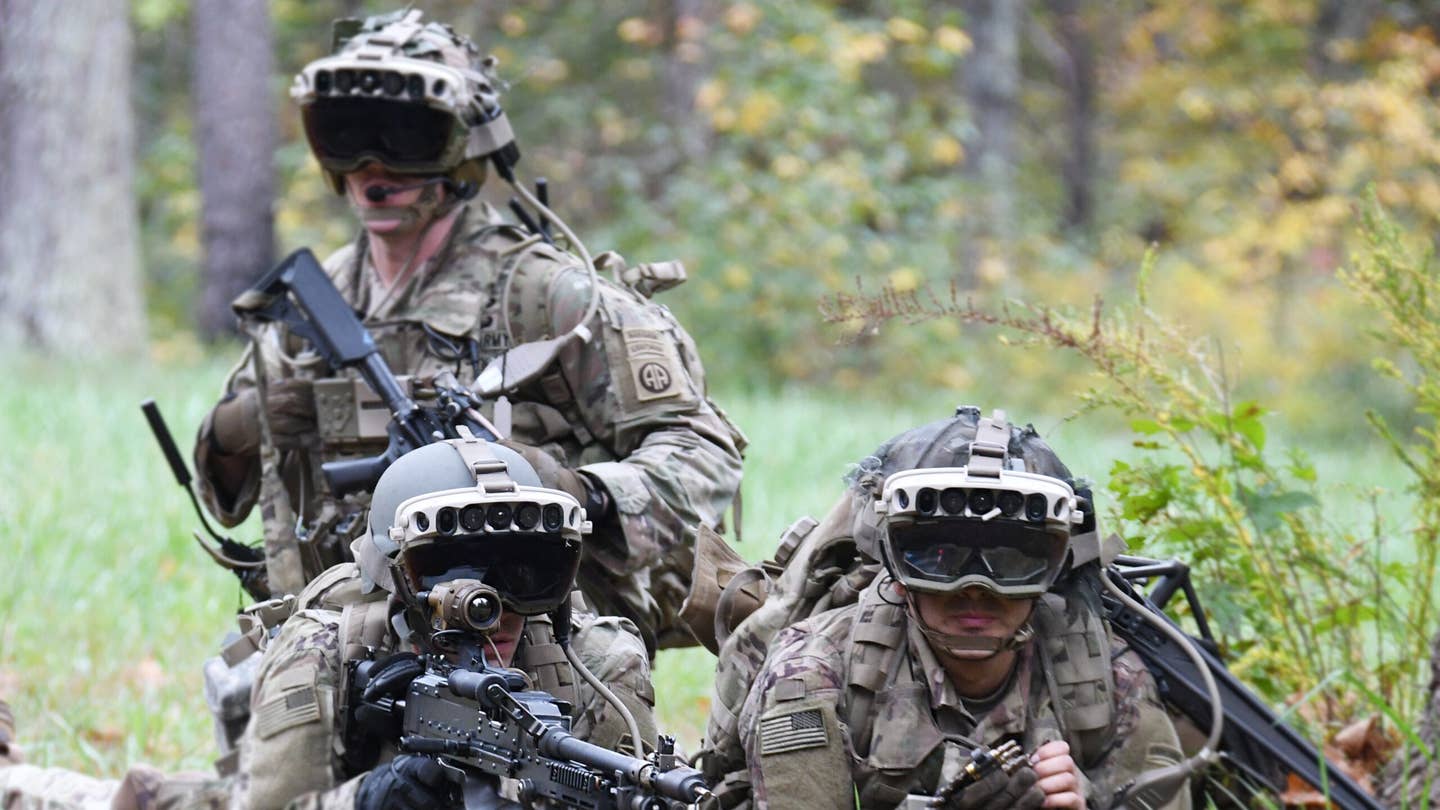Revolutionizing tomorrow’s battlefield with futuristic firepower

Soldiers from the 82nd Airborne Division used the latest prototype of the Integrated Visual Augmentation System (IVAS). (U.S. Army Photo by Bridgett Siter)
SUMMARY
In the high-stakes race of military technology, 'futuristic firepower' is the new constant, relentlessly pushing and breaching boundaries. Like a global chess match, this pursuit sees nations vying for that strategic upper hand. Thanks to unceasing technological advancements and ingenious designs, we're witnessing a powerful evolution in the military arms sector. Buckle up for a thrilling journey through the latest military weaponry marvels that are revolutionizing tomorrow's battlefield.
The dawn of a new speed era
In the realm of military technology, speed is the name of the game. Hypersonic weapons, capable of exceeding speeds of Mach 5 (around 3,836 mph), are the latest entrants in this high-stakes race. These trailblazing armaments are designed to outmaneuver even the most advanced missile defense systems.
The United States and Russia have been investing heavily in developing and testing hypersonic weapons, with China not far behind. These weapons' sheer speed and agility are forcing nations to delve deeper into their pockets, investing in groundbreaking countermeasures and detection technologies. A striking example is Russia's Avangard system, a hypersonic glide vehicle touted as being virtually unstoppable by current missile defense technology.
Unmanned Aerial Vehicles (UAVs)
UAVs, or drones as they are commonly known, have evolved into game-changers in recent years. They have proven their worth in various military operations, including surveillance, reconnaissance, combat and payload delivery.
As technology advances, drones are becoming increasingly autonomous, minimizing the need for human intervention. This shift reduces potential risks to military personnel and enables greater precision in targeting enemy forces. For instance, the MQ-9 Reaper, known as the "hunter-killer" drone, is capable of precision strikes with an impressive range, while the RQ-4 Global Hawk provides unparalleled reconnaissance capabilities, even in hostile airspace.
Directed-Energy Weapons (DEWs)
Directed-energy weapons (DEWs), a breed of futuristic firepower, use highly focused energy, such as lasers, microwaves, or particle beams, to disable or obliterate targets. Their key advantages lie in their speed, accuracy, and ability to engage multiple targets simultaneously.
Nations like the United States, Russia, and China invest heavily in developing and testing DEWs. A prime example is the U.S. Navy's Laser Weapon System (LaWS), which has proven its mettle in successful sea trials. Meanwhile, Russia's Peresvet, a vehicle-mounted laser weapon system, showcases the nation's commitment to this novel field of warfare.
AI & robotics
The amalgamation of artificial intelligence (AI) and robotics in military operations redefines the futuristic firepower concept. AI-powered systems can swiftly analyze massive volumes of data, facilitating faster and more accurate decision-making.
Military robotics, including autonomous ground vehicles and unmanned underwater vehicles, are also being developed to boost military prowess. Take, for instance, the U.S. Army's Robotic Combat Vehicle (RCV) program, which aims to develop a fleet of unmanned ground vehicles that can perform various tasks on the battlefield, from reconnaissance to providing fire support.
Infantry weapons take a leap forward
Infantry weapons have also undergone significant advancements in recent years, focusing on enhancing accuracy, lightening weight, and improving overall performance. The U.S. Army's Integrated Visual Augmentation System (IVAS), for instance, merges augmented reality with advanced sensor technology to amplify soldiers' situational awareness and targeting capabilities. Additionally, new ammunition technologies, such as cased telescoped ammunition and guided small arms munitions, are being explored to maximize infantry weapons' effectiveness and reduce the logistical burden on military forces.
Harnessing futuristic firepower
You've now had a glimpse into the fast-moving world of 'futuristic firepower.' From hypersonic weapons to autonomous drones, directed-energy weapons, AI, and advanced infantry equipment, it's clear that we're living in an era of rapid transformation in warfare. We're not just talking about minor improvements; these are game-changers, set to redefine the battlefield as we know it.
But, let's remember, this isn't just about who has the biggest guns. All these advancements underline the importance of maintaining a strategic edge to safeguard national security. And that's why nations need to continue investing in research and development, keeping an eye on emerging threats, and adapting to the ever-changing landscape of modern warfare.
So, as we embrace these cutting-edge technologies and foster international cooperation, let's keep sight of the ultimate goal: a safer, more secure world. Because, at the end of the day, isn't that what we're all striving for?
SHARE
